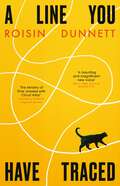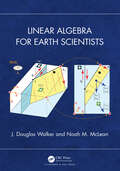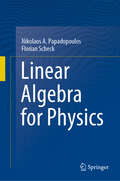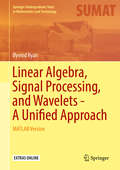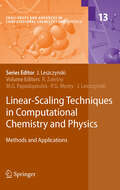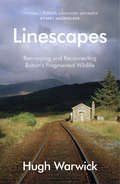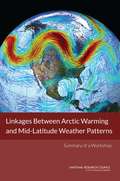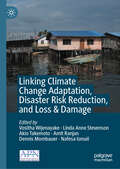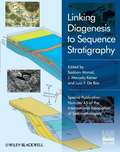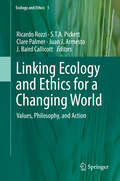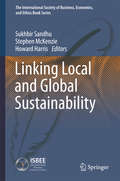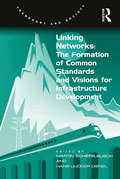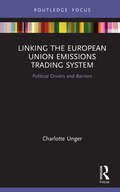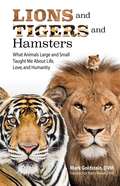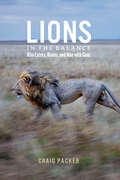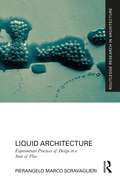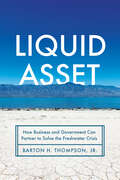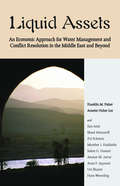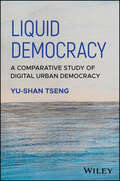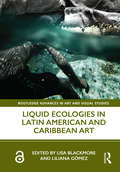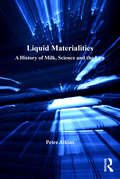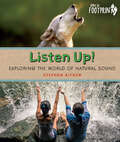- Table View
- List View
Line You Have Traced
by Roisin Dunnett&‘A haunting and magnificent new voice.&’ Sam J. Miller, author of Blackfish City &‘We can fix what we have done. We can undo the mistakes our ancestors made. We can set right what has been done wrong... You are the first step.&’ In a silverware shop, a young wife works alongside her husband. Amid growing political turmoil, Bea finds solace in the local marsh, where she is visited recurrently by a mysterious presence, logging each appearance carefully in a scarlet journal.In a time like now, Kay navigates friendship, queerness and the temporary job market, whilst contemplating the significance of her life in a world with such an uncertain future. At her grandmother&’s house she finds an intriguing record of an angel&’s visits.A hundred years into the future, outsiders have banded together to live off-grid away from a corrupt government and a city wracked by oppression and climate change. When Ess is chosen for a virgin mission, a journey into the past to save the present, she is guided only by a well-thumbed red notebook…Set against the shifting landscape of East London marshes and expanding over three centuries, this is the breathtaking, urgent story of three women separated by history but threaded together by unknown forces.&‘An inventive, ambitious novel.&’ Chris Power, author of A Lonely Man&‘A gloriously innovative, endlessly surprising gut punch of a novel.&’ Rebecca Tamás, author of Witch
Linear Algebra and Analytic Geometry for Physical Sciences (Undergraduate Lecture Notes in Physics)
by Giovanni Landi Alessandro ZampiniA self-contained introduction to finite dimensional vector spaces, matrices, systems of linear equations, spectral analysis on euclidean and hermitian spaces, affine euclidean geometry, quadratic forms and conic sections. The mathematical formalism is motivated and introduced by problems from physics, notably mechanics (including celestial) and electro-magnetism, with more than two hundreds examples and solved exercises.Topics include: The group of orthogonal transformations on euclidean spaces, in particular rotations, with Euler angles and angular velocity. The rigid body with its inertia matrix. The unitary group. Lie algebras and exponential map. The Dirac’s bra-ket formalism. Spectral theory for self-adjoint endomorphisms on euclidean and hermitian spaces. The Minkowski spacetime from special relativity and the Maxwell equations. Conic sections with the use of eccentricity and Keplerian motions. An appendix collects basic algebraic notions like group, ring and field; and complex numbers and integers modulo a prime number.The book will be useful to students taking a physics or engineer degree for a basic education as well as for students who wish to be competent in the subject and who may want to pursue a post-graduate qualification.
Linear Algebra for Earth Scientists
by Noah M. McLean J. Douglas WalkerLinear Algebra for Earth Scientists is written for undergraduate and graduate students in Earth and Environmental sciences. It is intended to give students enough background in linear algebra to work with systems of equations and data in geology, hydrology, geophysics, or whatever part of the Earth Sciences they engage with.The book does not presuppose any extensive prior knowledge of linear algebra. Instead, the book builds students up from a low base to a working understanding of the sub t that they can apply to their work, using many familiar examples in the geosciences.Features Suitable for students of Earth and Environmental Sciences Minimal prerequisites — written in a way that is accessible and engaging for those without a mathematical background All material presented with examples and applications to the Earth Sciences
Linear Algebra for Physics
by Florian Scheck Nikolaos A. PapadopoulosThis textbook provides a full treatment of Linear Algebra devoted to undergraduate and graduate physics students. Although the mathematical level is similar to the corresponding mathematical textbooks in regard to definitions, propositions and proofs, it adopts a language and approach more attuned to the reader’s familiarity with physics lectures and physics textbooks. A distinctive feature is the emphasis placed on the significance of bases within a vector space. As a result, students gain a deeper understanding of how vector indices, despite their abundance, serve not as enemies but as friends since they give additional information about the mathematical objects being used, and facilitate access to tensor formalism. The book offers numerous worked examples and exercises with solution hints to deepen this knowledge.
Linear Algebra, Signal Processing, and Wavelets - A Unified Approach: MATLAB Version (Springer Undergraduate Texts in Mathematics and Technology)
by Øyvind RyanThis book offers a user friendly, hands-on, and systematic introduction to applied and computational harmonic analysis: to Fourier analysis, signal processing and wavelets; and to their interplay and applications. The approach is novel, and the book can be used in undergraduate courses, for example, following a first course in linear algebra, but is also suitable for use in graduate level courses. The book will benefit anyone with a basic background in linear algebra. It defines fundamental concepts in signal processing and wavelet theory, assuming only a familiarity with elementary linear algebra. No background in signal processing is needed. Additionally, the book demonstrates in detail why linear algebra is often the best way to go. Those with only a signal processing background are also introduced to the world of linear algebra, although a full course is recommended. The book comes in two versions: one based on MATLAB, and one on Python, demonstrating the feasibility and applications of both approaches. Most of the MATLAB code is available interactively. The applications mainly involve sound and images. The book also includes a rich set of exercises, many of which are of a computational nature.
Linear-Scaling Techniques in Computational Chemistry and Physics
by Jerzy Leszczynski Manthos G. Papadopoulos Robert Zaleśny Paul G. Mezey"Linear-Scaling Techniques in Computational Chemistry and Physics" summarizes recent progresses in linear-scaling techniques and their applications in chemistry and physics. In order to meet the needs of a broad community of chemists and physicists, the book focuses on recent advances that extended the scope of possible exploitations of the theory. The first chapter provides an overview of the present state of the linear-scaling methodologies and their applications, outlining hot topics in this field, and pointing to expected developments in the near future. This general introduction is then followed by several review chapters written by experts who substantially contributed to recent developments in this field. The purpose of this book is to review, in a systematic manner, recent developments in linear-scaling methods and their applications in computational chemistry and physics. Great emphasis is put on the theoretical aspects of linear-scaling methods. This book serves as a handbook for theoreticians, who are involved in the development of new efficient computational methods as well as for scientists, who are using the tools of computational chemistry and physics in their research.
Linescapes: Remapping and Reconnecting Britain's Fragmented Wildlife
by Hugh Warwick‘Glorious… Political, passionate, perceptive’ Robert MacfarlaneAn eye-opening exploration of the lines that cut through our countryside, from hedges to railways, and a passionate manifesto for reconnecting wildlife.Our landscape has been transformed by a vast network of lines, from hedges and walls to railways and power cables. In Linescapes, Hugh Warwick unravels the far-reaching ecological consequences of these changes. As our lives and our land were fenced in and threaded together, wildlife habitats were cut into ever smaller – and increasingly unviable – fragments. Yet as Warwick travels across this linescape, he shows that we can help our flora and fauna to flourish once again. With his fresh and bracing perspective on Britain’s countryside, he proposes a challenge and gives ground for hope, for our lines can and do contain a real potential for wildness and for wildlife.
Linkages Between Arctic Warming and Mid-Latitude Weather Patterns: Summary of a Workshop
by Katie ThomasThe Arctic has been undergoing significant changes in recent years. Average temperatures are rising twice as fast as they are elsewhere in the world. The extent and thickness of sea ice is rapidly declining. Such changes may have an impact on atmospheric conditions outside the region. Several hypotheses for how Arctic warming may be influencing mid-latitude weather patterns have been proposed recently. For example, Arctic warming could lead to a weakened jet stream resulting in more persistent weather patterns in the mid-latitudes. Or Arctic sea ice loss could lead to an increase of snow on high-latitude land, which in turn impacts the jet stream resulting in cold Eurasian and North American winters. These and other potential connections between a warming Arctic and mid-latitude weather are the subject of active research. "Linkages Between Arctic Warming and Mid-Latitude Weather Patterns" is the summary of a workshop convened in September 2013 by the National Research Council to review our current understanding and to discuss research needed to better understand proposed linkages. A diverse array of experts examined linkages between a warming Arctic and mid-latitude weather patterns. The workshop included presentations from leading researchers representing a range of views on this topic. The workshop was organized to allow participants to take a global perspective and consider the influence of the Arctic in the context of forcing from other components of the climate system, such as changes in the tropics, ocean circulation, and mid-latitude sea surface temperature. This report discusses our current understanding of the mechanisms that link declines in Arctic sea ice cover, loss of high-latitude snow cover, changes in Arctic-region energy fluxes, atmospheric circulation patterns, and the occurrence of extreme weather events; possible implications of more severe loss of summer Arctic sea ice upon weather patterns at lower latitudes; major gaps in our understanding, and observational and/or modeling efforts that are needed to fill those gaps; and current opportunities and limitations for using Arctic sea ice predictions to assess the risk of temperature/precipitation anomalies and extreme weather events over northern continents.
Linking Climate Change Adaptation, Disaster Risk Reduction, and Loss & Damage
by Linda Anne Stevenson Amit Ranjan Dennis Mombauer Vositha Wijenayake Akio Takemoto Nafesa IsmailThis book advances knowledge on loss & damage (L&D) and its interlinkages with climate adaptation and disaster risk reduction. The book includes twelve case studies conducted across South and Southeast Asia, covering sectors including agriculture, rural livelihoods, energy, infrastructure and natural resources. These studies provide insights into complex climate-induced L&D, enhancing local, national and regional knowledge and contributing to global agendas.
Linking Diagenesis to Sequence Stratigraphy (Special Publication 45 of the IAS)
by Sadoon Morad Luis F. de Ros Marcelo KetzerSequence stratigraphy is a powerful tool for the prediction of depositional porosity and permeability, but does not account for the impact of diagenesis on these reservoir parameters. Therefore, integrating diagenesis and sequence stratigraphy can provide a better way of predicting reservoir quality.This special publication consists of 19 papers (reviews and case studies) exploring different aspects of the integration of diagenesis and sequence stratigraphy in carbonate, siliciclastic, and mixed carbonate-siliciclastic successions from various geological settings. This book will be of interest to sedimentary petrologists aiming to understand the distribution of diagenesis in siliciclastic and carbonate successions, to sequence stratigraphers who can use diagenetic features to recognize and verify interpreted key stratigraphic surfaces, and to petroleum geologists who wish to develop more realistic conceptual models for the spatial and temporal distribution of reservoir quality.This book is part of the International Association of Sedimentologists (IAS) Special Publications.The Special Publications from the IAS are a set of thematic volumes edited by specialists on subjects of central interest to sedimentologists. Papers are reviewed and printed to the same high standards as those published in the journal Sedimentology and several of these volumes have become standard works of reference.
Linking Ecology and Ethics for a Changing World
by J. Baird Callicott Clare Palmer Ricardo Rozzi S. T. A. Pickett Juan J. ArmestoTo comprehensively address the complexities of current socio-ecological problems involved in global environmental change, it is indispiseble to achieve an integration of ecological understanding and ethical values. Contemporary science proposes an inclusive ecosystem concept that recognizes humans as components. Contemporary environmental ethics includes eco-social justice and the realization that as important as biodiversity is cultural diversity, inter-cultural, inter-institutional, and international collaboration requiring a novel approach known as biocultural conservation. Right action in confronting the challenges of the 21st century requires science and ethics to be seamlessly integrated. This book resulted from the 14th Cary Conference that brought together leading scholars and practitioners in ecology and environmental philosophy to discuss core terminologies, methods, questions, and practical frameworks for long-term socio-ecological research, education, and decision making.
Linking Local and Global Sustainability
by Howard Harris Stephen Mckenzie Sukhbir SandhuThe book takes a holistic approach to sustainability. Acknowledging the Brundtland definition, that sustainable development meets the needs of the present without compromising the ability of future generations to meet their own needs, the book is specifically concerned with the ethics of contemporary social and environmental sustainability activity and thinking. It is concerned with the role of institutions-both local and global in achieving sustainability initiatives. All twelve chapters extend sustainability-conceptually, empirically and theoretically, and in doing so provide insights into linking local and global sustainability. The book refocuses sustainability as a series of interwoven and dynamic relationships, backed by just ethical decision-making, which begin locally, and reach out to impact the global level.
Linking Networks: The Formation Of Common Standards And Visions For Infrastructure Development (Transport And Society Ser.)
by Hans-Liudger DienelPresenting recent research on the international integration of infrastructures in Europe, this book combines general and methodological chapters and examples from different a variety of sectors such as transport, electricity and communication networks. Particular focus is on the contrast between the 'Europe of nation states' of the nineteenth century (up to 1914) and the emerging 'integrated Europe' after World War II. Additional contributions provide perspectives from beyond Europe. The wide range of topics gives a good overview of the different challenges posed and the strategies employed in each sector to establish internationally compatible networks, procedures and standards. This work strengthens comparative research as a complement to the detailed analysis of singular cases that often characterises previous works in this field. Methodologically, it therefore contributes to the progress of tools and strategies for comparative historical research. Part of the emerging research area dealing with the mechanisms of international collaboration, this book brings together recent research from European integration history, policy studies, political economy and cultural studies. Considering the growing intensity of international collaboration and exchange in many parts of social and economic life, it is also of topical interest.
Linking the European Union Emissions Trading System: Political Drivers and Barriers (Routledge Focus on Environment and Sustainability)
by Charlotte UngerThis book focuses on the linking of the European Union Emissions Trading System (EU ETS) with other independent regional ETS. While rich practical and academic research has evolved on the economic and technical side of ETS linking, political drivers and barriers have so far been underrepresented in this debate. Filling this lacuna and based on international relations theory, existing research and qualitative fieldwork, this book introduces the range of political conditions that influence linking, such as political leadership and stakeholder activity. Specifically, it analyzes which of these aspects have played a role in three different linking activities of the EU: (1) a failed linking attempt: EU ETS–California Cap-and-Trade Program; (2) a successful linking treaty: EU ETS–Switzerland Emissions Trading System; and (3) an agreed-upon but not realized link: EU ETS–Australia Carbon Pricing Mechanism. Through an interrogation of these examples, Dr. Unger concludes that it is not only the technical challenges or the overall economic benefit but rather domestic interests, structural aspects, and external international political developments that have jointly dominated linking activities, especially those in which the EU takes part. This book will be of great interest to scholars and policy-makers working in climate policy and EU environmental politics.
Lions and Tigers and Hamsters: What Animals Large and Small Taught Me About Life, Love, and Humanity
by Dr. Mark GoldsteinFrom the time Dr. Mark Goldstein was a little boy—even before he had his first dog—he was fascinated by creatures both domestic and wild. After graduating veterinary school at Cornell University, he became a veterinarian in clinical practice, then director of zoos in Boston and Los Angeles, then head of a progressive humane society where he advocated for animal welfare. During his extraordinary 30-year career, Dr. Mark has accrued a lifetime of experiences working with all sorts of animals and the people who care for them. Dr. Mark's life with animals taught him more than how to be a great doctor, it taught him how to live life. The stories in this book reflect those lessons; they will make you laugh and cry as they entertain and amaze you. Each real-life experience sheds light on the challenges and hard work of the talented individuals who work in the world of animal welfare. These are stories that illustrate the tremendous impact animals have on our daily lives—they are hallmarks of the sacred importance of the human-animal bond. On your journey through the exhilarating life of Dr. Mark, you'll meet some of the finned, furred, and feathered animals who offered him invaluable insights—Harold the hamster, Sasha the Siberian tiger, St. Francis the German Shepherd, Ralph the buffalo, Gus the stallion, Frank the goldfish, and many more fascinating creatures!
Lions in the Balance: Man-Eaters, Manes, and Men with Guns
by Craig PackerIf you are a morani (warrior), you have your spear at the ready—you could be the hero, but you will have to wait until the morning light before you can go out and prove yourself. If it is a lion, you want to be the first to spear it—and if the lion turns on you, make sure it mauls you on your chest or stomach, on your face, shins, or throat. Any place where you can show your scars with pride, show the incontrovertible evidence of courage. A scar on your back would be a permanent reminder of cowardice, an ineradicable trace of shame. Monsters take many forms: from man-eating lions to the people who hunt them, from armed robbers to that midnight knock at the door of a cheap hotel room in Dar es Salaam. And celebrated biologist Craig Packer has faced them all. Head on. With Lions in the Balance, Packer takes us back into the complex, tooth-and-claw world of the African lion, offering revealing insights into both the lives of one of the most iconic and dangerous animals on earth and the very real risks of protecting them. A sequel to his prize-winning Into Africa—which gave many readers their first experience of fieldwork in Africa, of cooperative lions on dusty savannas, and political kidnappings on the shores of Lake Tanganyika—this new diary-based chronicle of cutting-edge research and heartbreaking corruption will both alarm and entertain. Packer’s story offers a look into the future of the lion, one in which the politics of conservation will require survival strategies far more creative and powerful than those practiced anywhere in the world today. Packer is sure to infuriate millionaires, politicians, aid agencies, and conservationists alike as he minces no words about the problems he encounters. But with a narrative stretching from far flung parts of Africa to the corridors of power in Washington, DC, and marked by Packer’s signature humor and incredible candor, Lions in the Balance is a tale of courage against impossible odds, a masterly blend of science, adventure, and storytelling, and an urgent call to action that will captivate a new generation of readers.
Liquid Architecture: Experimental Practices of Design in a State of Flux (Routledge Research in Architecture)
by Pierangelo Marco ScravaglieriLiquid Architecture challenges the idea of architecture as a fixed, inert container and reconceptualises it as a body whose boundaries are rather blurred and ever-changing. This book moves away from form as the primary driver of spatial protocols and explores what the built environment might look like when viewed through the lenses of a ‘wet ontology’ that is attentive to fluidity, flows and territorial dynamism. A reconfiguration of architectural materials and authorship is thus considered, leading, in turn, to an exploration of the ethical dimensions of co-designing with natural systems (of various viscosities) through liquid paradigms. The book examines a set of principles for practice-led discoveries that incorporate hybrid, mixed media with the author’s intersubjective relationship with liquid matter. Drawing from qualitative-based analytical investigation models, the text allows comprehension of the liquid phenomena via material contextualisation of an ever-becoming research setting. Through a practical and theoretical engagement with the ontology of liquids, the reader is exposed to a range of design-led experiments and creative propositions, visualisation systems, construction, and testing of physical models that collectively translate into a series of novel insights for architectural agendas. This book will be of interest to architecture and design research students and academics because it advocates the need for a more symbiotic and resilient approach to natural systems, which could benefit from the integration of regenerating material flows into our buildings and urban settlements.
Liquid Asset: How Business and Government Can Partner to Solve the Freshwater Crisis
by Barton H. Thompson Jr.A sweeping, policy-oriented account of the private and public management of the world's essential natural resource. Governments dominated water management throughout the twentieth century. Tasked with ensuring a public supply of clean, safe, reliable, and affordable water, governmental agencies controlled water administration in most of the world. They built the dams, reservoirs, and aqueducts that store water when available and move that water to areas with increasing populations and economies. Private businesses sometimes played a part in managing water, but typically in a supporting position as consultants or contractors. Today, given the global need for innovative new technologies, institutions, and financing to solve the freshwater crisis, private businesses and markets are playing a rapidly expanding role, bringing both new approaches and new challenges to a historically public field. In Liquid Asset, Barton H. Thompson, Jr. examines the growing position of the private sector in the "business of water." Thompson seeks to understand the private sector's involvement in meeting the water needs of both humans and the environment, looks at the potential risks that growing private involvement poses to the public interest in water, and considers the obstacles that private organizations face in trying to participate in a traditionally governmental sector. Thompson provides a richly detailed analysis to foster both improved public policy and responsible business behavior. As the book demonstrates, the story of private businesses and water offers a window into the serious challenges facing freshwater today, and their potential solutions.
Liquid Assets: An Economic Approach for Water Management and Conflict Resolution in the Middle East and Beyond
by Franklin Fisher Annette Huber-LeeLiquid Assets shows that the common view of water as an inevitable cause of future wars is neither rational nor necessary. Typically, two or more parties with claim to the same water sources are thought to play a zero-sum game with each side placing a high emotional and political value over the ownership of the water. However, Franklin Fisher and his coauthors demonstrate that when disputes in ownership are expressed as disputes about money values, in most cases, the benefits of ownership will be surprisingly small. By assigning an economic value to water and treating water as a tradable resource, parties see that the gains from cooperation exceed the costs resulting from the change in ownership. A zero-sum game becomes a win-win situation. To support this new approach, Liquid Assets presents an innovative water allocation model that can be used to assist water management, the cost-benefit analysis of water infrastructure, and the resolution of disputes. The model takes system-wide effects into account and is the first to overcome the failure of actual water markets to cope with the divergence between social and private benefits (as implied by agricultural subsidies), permitting the model-user to impose his or her own values or policies. Liquid Assets applies its methodology to Israel, Jordan, and Palestine, a region where water is scarce and water conflicts are often thought to be explosive. Indeed, this book is the result of a joint effort of Israeli, Jordanian, Palestinian, American, and Dutch experts. But the book‘s message and methods are not restricted to the Middle East. They are applicable to water management and water disputes around the globe.
Liquid Democracy: A Comparative Study of Digital Urban Democracy (Antipode Book Series)
by Yu-Shan Tseng“This timely book carefully interrogates the increasingly fraught intersections of the digital, the city, and democracy. It is a book that will endure, bristling as it is with thoughtful reflection and insight on the democratic challenges that unfold amidst the ordinary, troubled and generative digital worlds of cities as different as Madrid, Taipei and Helsinki. Amidst the work of policymakers, activists, and engineers, what emerges is a hopeful exploration of what ‘digital democracy platforms’ might enable.” —Professor Colin McFarlane, Durham University “This vital book moves beyond a universal analysis of the effects of social media platforms on liberal democracy. Through an in-depth examination of civic platforms in Finland, Spain and Taiwan, Tseng provides a compelling and nuanced empirical and theoretical analysis of the contingent relationship between platforms, place and democracy.” —Professor Rob Kitchin, Maynooth University Reimagining Democracy in the Digital and Urban Age How can democracy adapt and thrive in a world reshaped by artificial intelligence and digital platforms? In Liquid Democracy, author Yu-Shan Tseng offers a bold new framework for understanding democracy as a dynamic, fluid process. Challenging the idea that AI and digital tools are inherently anti-democratic, this innovative volume bridges theory and practice to investigate various “liquid conditions,” a novel concept capturing how political action flows and transforms like water within the intersections of urban spaces and digital technologies. Through an in-depth comparative study of three groundbreaking digital democracy platforms—Decide Madrid in Madrid, OmaStadi in Helsinki, and vTaiwan in Taipei—Tseng explores how digital platforms can foster participatory governance, pluralism, and alternative democratic futures. In-depth chapters critically examine the interactions between humans, algorithms, and urban systems, revealing how digital tools reconfigure the boundaries of political participation, decision-making, and collective action. Throughout the text, Tseng offers fresh insights into how democracy emerges under contingent conditions shaped by technology and geography. Drawing from years of ethnographic fieldwork, Liquid Democracy is essential reading for master’s and PhD students in geography, political science, and urban studies, as well as scholars, practitioners, and policymakers interested in digital governance, smart cities, civic technology, and algorithmic politics.
Liquid Ecologies in Latin American and Caribbean Art (Routledge Advances in Art and Visual Studies)
by Liliana Gómez Lisa BlackmoreThis interdisciplinary book brings into dialogue research on how different fluids and bodies of water are mobilised as liquid ecologies in the arts in Latin America and the Caribbean. Examining the visual arts, including multimedia installations, performance, photography and film, the chapters place diverse fluids and systems of flow in art historical, ecocritical and cultural analytical contexts. The book will be of interest to scholars of art history, cultural studies, environmental humanities, blue humanities, ecocriticism, Latin American and Caribbean studies, and island studies.
Liquid Institutionalization at Sea: Reflexivity and Power Dynamics of Blue Governance Arrangements
by Jan P.M. van TatenhoveThis book presents an innovative theory of liquid institutionalization at sea and explores the building blocks of this theory focusing in particular on institutionalization, blue governance arrangements, reflexivity and power. The book opens with an overview of stability and change in new institutional theory before moving on to discuss liquid institutionalization in more detail. The author applies this approach to three different cases: Arctic shipping; deep seabed mining; and transboundary regionalization in Europe. For each of these cases the book describes the emerging blue governance arrangements, the type of liquid institutionalization and the consequences this has for power and reflexivity.
Liquid Materialities: A History of Milk, Science and the Law (Critical Food Studies)
by Peter AtkinsAs a food, milk has been revered and ignored, respected and feared. In the face of its 'material resistance', attempts were made to purify it of dirt and disease, and to standardize its fat content. This is a history of the struggle to bring milk under control, to manipulate its naturally variable composition and, as a result, to redraw the boundaries between nature and society. Peter Atkins follows two centuries of dynamic and intriguing food history, shedding light on the resistance of natural products to the ordering of science. After this look at the stuff in foodstuffs, it is impossible to see the modern diet in the same way again.
Liquid-Phase Transition in Water (NIMS Monographs)
by Osamu MishimaA profound secret of nature hidden in ice water in a glass cup is revealed in this book. The author teaches a simple method for understanding the complex properties of water through the concept of polyamorphism. Polyamorphism is the existence of two kinds of liquid water, leading to a discontinuous transition between them. Currently, this two-water scenario is controversial in the scientific community because definitive experimental proof is difficult. However, a growing number of researchers believe there is adequate circumstantial evidence for the scenario. This introductory book focuses experimental thermodynamic data of liquid water, supercooled water, and amorphous solid water at various pressures and temperatures, and demonstrates how the two-water scenario initially evolved experimentally. The book explains the importance of polyamorphism in comprehending liquid water.
Listen Up!: Exploring the World of Natural Sound (Orca Footprints #24)
by Stephen AitkenThe sounds of nature are being drowned out by the clamor of human activity, and that's not good for people, animals or the environment. Every living thing emits sound—birds sing, whales whistle, streams burble and trees pop and fizzle. In Listen Up, young readers are introduced to all the sounds of the natural world, from the first Big Bang to the complex soundscapes of the rainforests. Readers will also discover how the invasion of human sounds, from airplanes, traffic and machines, is threatening the survival of species that have adapted to their habitats over thousands of years. Conserving the sounds of nature is an important part of addressing the biggest challenges facing humanity today—protecting the planet's biodiversity and the future of our natural world.
